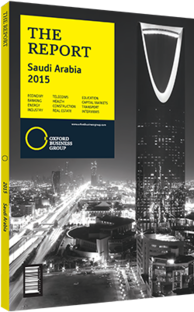World Heritage status boosts rapid tourism sector growth in Jeddah
Visitors to Jeddah in January 2015 were witness to a rare treat: as part of the festivities surrounding the opening of the 2nd Historic Jeddah Festival, an operetta called “Your Sun Shines” was performed by 100 local folk artists. The subject of the operetta was highly apposite: it told the story of historic Jeddah’s social life, how later generations drifted from such ways, and how eventually “the sun started shining again”, as the city’s heritage achievements were recognised by UNESCO.
Organisers of the festival – which was expected to draw 1m visitors – were hoping to deliver a clear message. As Prince Mishaal bin Majed, governor of Jeddah and chairman of the Tourism Development Council, announced at the opening ceremony, “The festival is aimed at making people aware of their invaluable heritage and to help preserve it.”
Gaining Recognition
Thanks to ongoing efforts by the local municipality and the Saudi Commission for Tourism and Antiquities (SCTA), such heritage is beginning to gain recognition, and Jeddah’s tourism industry is directly benefitting as a result. The process began several years ago, when the Kingdom’s initial 2011 bid for Jeddah’s historic centre to receive World Heritage status failed. In the following three years the government undertook significant restoration work, and was rewarded in June 2014 in its second, successful bid. Far from resting on its laurels, Jeddah’s World Heritage status has spurred the government on to further action: 640 buildings in Jeddah’s historic centre are currently undergoing renovation to meet UNESCO requirements.
Such recognition is something of a novelty for the city. Long known as the “Gateway to Makkah”, Jeddah has been a stopping-off point for pilgrims performing Hajj and Umrah for over two centuries. While still performing this function (notably through King Abdulaziz International Airport [KAIA] and its dedicated Hajj terminal), the city is increasingly confident of having something to offer visitors in its own right.
Places to Stay
Indeed, such is the buzz surrounding Jeddah as a tourist destination that it currently tops the Middle East and Africa region in percentage terms for new hotel construction. According to data compiled by STR Global, a hospitality benchmarking group, Jeddah’s current pipeline of 7396 rooms under contract would represent growth of 115.7%, placing it ahead of Riyadh in second position, which is expanding at 113%.
Jeddah already appears to be benefitting from the additional interest generated by the UNESCO listing. STR Global recorded an 8.9% increase in average room rates for the city through year-end 2014, reaching SR968.73 ($258.17), with additional increases in occupancy rates driving revenue per available room up 9.9%. Meanwhile, efforts such as the Historic Jeddah Festival are also having an immediate impact, with the Jeddah Chamber of Commerce noting a 70% increase in visitors during the festivities, leading to a knock-on 50% growth in the city’s food and beverage sector.
Connectivity
Authorities will be hoping that additional investments in Jeddah’s urban environment and transport infrastructure will help further drive tourist numbers. The new KAIA is scheduled to open in mid-2016, and will increase annual passenger capacity to 30m in the first phase, eventually rising to up to 80m in the final phase. Meanwhile, both the Jeddah Metro system and the Haramain High-Speed Rail will significantly improve connectivity within and without the city in the coming years. Additional developments along the city’s cornice, valued at an estimated SR1.2bn ($320m) and including the Dhabhan Marine Park, will further complement Jeddah’s heritage trail.
Despite the significant investment pipeline, local developers are convinced that further opportunities remain, particularly in the hotel-apartment segment. Within Jeddah’s historical sector, the SCTA also has plans to increase the number of heritage hotels, restaurants and souks, as well as establishing a permanent office in one of the district’s renovated buildings. Historic handicrafts and traditional cuisine are also being revived for the tourist market. Jeddah’s past, it would seem, is leading its tourism sector into a bright future.
You have reached the limit of premium articles you can view for free.
Choose from the options below to purchase print or digital editions of our Reports. You can also purchase a website subscription giving you unlimited access to all of our Reports online for 12 months.
If you have already purchased this Report or have a website subscription, please login to continue.

